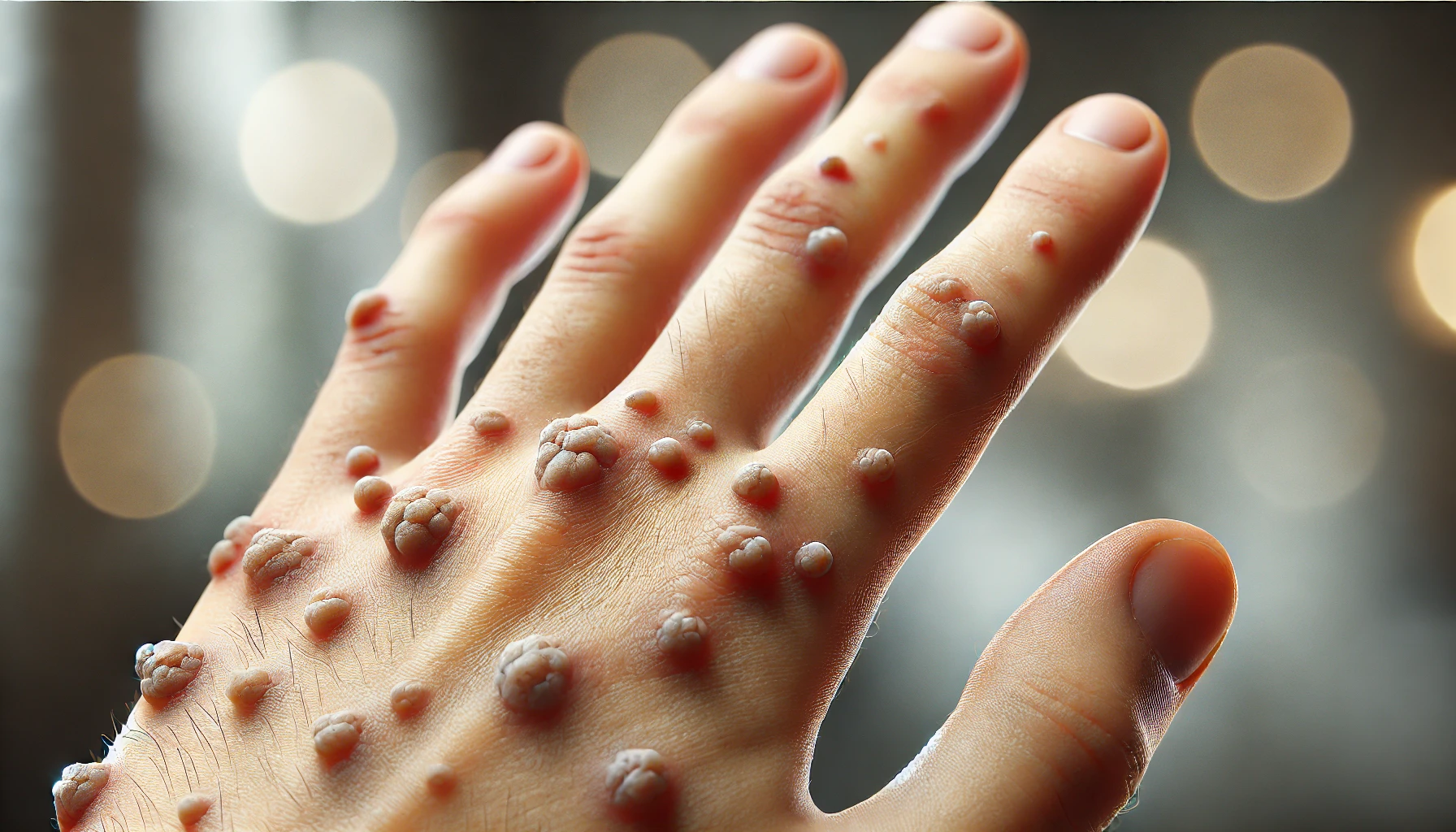Plantar Warts and Palmar Warts: An Overview of Treatments
This post was written with Consensus AI Academic Search Engine – please read our Disclaimer at the end of this article. Plantar and palmar warts are common dermatological conditions caused by the human papillomavirus (HPV). These warts can be painful and challenging to treat, often requiring multiple therapeutic approaches. This article reviews various treatment modalities for plantar and palmar warts, highlighting their efficacy and safety.
Combined Treatment Approaches
A study conducted at the Ural Research Institute for Dermatology, Venereology, and Immunopathology compared the efficacy of cryodestruction with and without an immune-modulating drug. The results showed that combining cryodestruction with an immune-modulating drug had a clinical effect in 93.3% of patients, significantly higher than cryodestruction alone1.
Herbal and Natural Treatments
External washing with Euphorbia has been explored as a treatment for palmar and plantar warts. In a randomized study, the treatment group showed a 90% effective rate compared to 67% in the control group treated with methanal, with fewer relapses observed in the treatment group2. Additionally, a phase I/II clinical trial demonstrated that a naturally derived topical formula, Nowarta110, was significantly more effective than a placebo in treating plantar warts, with a complete clearance rate of 64.3%10.
Immunotherapy
Immunotherapy has gained attention for its role in treating recalcitrant warts. Intralesional injections of tuberculin-purified protein derivatives (PPD) and zinc sulfate 2% were compared, with PPD showing a higher rate of complete clearance (87%) compared to zinc sulfate (72.7%)3. Another study compared intralesional vitamin D3 and zinc sulfate for plantar warts, finding that both treatments were effective, with complete response rates of 80% and 70%, respectively5.
Physical Therapies
Electrocautery and cryotherapy are common physical treatments for warts. A study comparing these methods found that electrocautery was more effective, with a complete clearance rate of 76% compared to 44% for cryotherapy6. Photodynamic therapy combined with transfer factor capsules also showed promise, with an 86.96% success rate and a lower recurrence rate compared to cryotherapy8.
Vaccine-Based Treatments
The use of the measles, mumps, and rubella (MMR) vaccine as an intralesional treatment for warts has been investigated. A study found that the MMR vaccine was more effective than 100% trichloroacetic acid, with 26.44% of patients achieving complete resolution7.
HPV Type and Treatment Response
The type of HPV influencing the wart can affect the natural course and response to treatment. A study found that HPV type 1-associated plantar warts had a higher cure rate with cryotherapy and salicylic acid compared to other HPV types9.
Conclusion
The treatment of plantar and palmar warts involves various modalities, each with its own efficacy and safety profile. Combining treatments, such as cryodestruction with immune-modulating drugs, and exploring new therapies like photodynamic therapy and immunotherapy, can enhance treatment outcomes. Understanding the HPV type associated with the warts can also help tailor more effective treatment strategies.
Disclaimer
The content presented in this blog is generated by Consensus, an AI-powered academic search engine, and is based on publicly available scientific literature. While every effort is made to provide accurate, up-to-date, and well-researched information, the content is intended for informational and educational purposes only. It does not constitute medical advice, diagnosis, or treatment. Always consult a qualified healthcare professional before making any decisions regarding medical conditions, treatments, or medications. The AI system’s analysis may not cover all perspectives, emerging research, or individual cases, and it is not a substitute for professional expertise. Neither the blog publisher nor the developers of the AI-powered search engine are responsible for any actions taken based on the information provided in this content. Use of this information is at your own risk. Citations to the original scientific studies are included for reference, but these studies should be reviewed in full and interpreted with the guidance of a healthcare or research professional.
If you are experiencing a medical emergency, please seek immediate attention from a healthcare provider.
